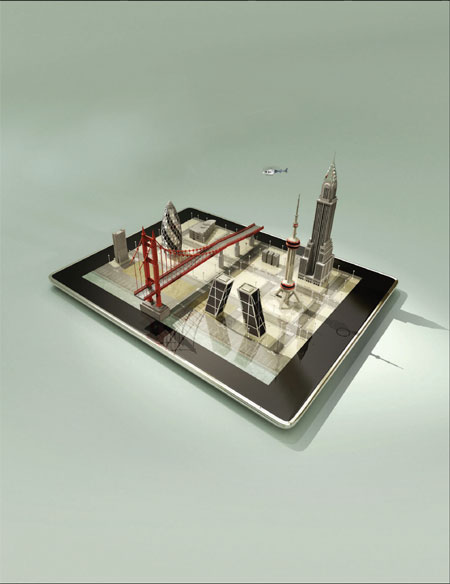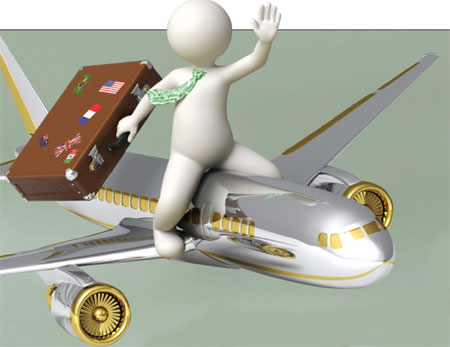Flight plan for the future
Updated: 2013-07-05 07:20
By Wong Joon San(HK Edition)
|
|||||||


The air travel experience is evolving fast. It won't be long before there's real-time, contextualized communication between airlines and their customers. Governments will validate passports and visas in advance of any scheduled journey. Wong Joon San reports.
At many airports over the last five to 10 years, changes have been evolving slowly throughout the entire air travel process. From check-in, to managing passenger flow airlines are shifting to increased mobility and putting more emphasis on self-service. Among the beneficiaries of this advancing aviation technology are Hong Kong airport and the 56.5 million passengers who traveled through HKIA last year alone.
Frequent air travelers cannot have failed to notice. You can make seat reservations on your iPAD or with a smart phone.
With the emergence of low cost carriers, full fare airlines have had to turn to technological innovation to lower costs and one-up the low cost competition by improving passenger comfort, redesigning seats and adding new embellishments to in-flight entertainment.
Choy Choong Yew, a senior executive of GA Holdings Ltd, a major distributor of high-end automobiles on the mainland, flies between Chinese mainland and Hong Kong frequently. He welcomes the improvement in his experience as a passenger.
Choy, who lives in Fuzhou in Fujian province, comes here on weekends to be with his wife and kids. Choy also flies to Beijing, Shanghai and to a lesser extent, other cities for meetings.
"I used to spend a great deal of waiting time at airports, but today things have improved immensely. There's only slightly more than an hour's wait at most airports because of online check-ins and self check-in terminals," Choy says enthusiastically.
The old rule about checking in more than two hours before departure is gone. These days Choy arrives a little over an hour before his flight. Self-check-in desks have also helped to cut waiting times at many Chinese airports.
More to come
By 2015, four major aspects of the air passenger experience will change. Passengers will have more control over their arrangements. Self-service will play a growing role. In that short space of time, 90 percent of airlines will have mobile check-in. Today only 50 percent offer the service. At different stages of their journey, passengers will use 2D boarding passes based on "contactless technology" such as Near Field Communications (NFC) on their phones. These passes will be applicable at boarding gates to help fast-track security zones and provide access to premium passenger lounges. Japan Airline's Touch & Go Android is one example - an app, allowing passengers to pass through boarding gates using their NFC-enabled phones. France's Toulouse-Blagnac Airport is piloting a similar service.
Customer services will be mobile and more social. By 2015, nine out of 10 airlines and airports will provide flight updates on smart phone apps.
By 2015, more than 80 percent of airports and airlines will invest in business intelligence solutions. Most of that focus will be on improving customer service and satisfaction, often through personalized services. For example, one European airline, Veuling, researches customers via social media like Facebook to obtain some appreciation of customers' personalities, likes and dislikes. The system then integrates the information into business intelligence programs. The objective is to establish a personal touch that improves customer loyalty.
In addition, the web and mobile phone apps will be the top two sales channels. Passengers want more personalized services and the industry is responding.
Information Technology (IT) vendors are making the enhancements possible. SITA is one. The company, a leading specialist in air transport communications and information technology works closely with every sector of the air transport community, innovating, developing and managing business solutions over the world's most extensive network - one that forms the "communications backbone" of the global air transport industry.
Ilya Gutlin, SITA's president for the Asia Pacific Geography, says that despite the ongoing and immediate global economic pressures, the air travel outlook is bright. The International Air Transport Association (IATA) predicts that airlines will carry some 3.6 billion passengers in 2016 - three years from now. That's an increase of around 800 million over 2011 passenger numbers.
The industry consensus is that passenger numbers will expand, on average, 5.3 percent every year, between 2012 and 2016. That four-year span will also see nearly 500 million first time passengers traveling on domestic routes and 331 million first time passengers on international routes. If that rate of growth is maintained, air travelers will more than double by 2030.
Hong Kong International Airport (HKIA) did well last year - it's passenger traffic reaching 56.5 million. The airport handled 352,000 aircraft movements. The growth rate, on a year to year basis was 4.7 percent and 5.3 percent, respectively, with the numbers breaking all previous annual records.
Stanley Hui Hon-chung, Chief Executive Officer of Airport Authority Hong Kong, said, "Despite the challenging global economic environment, regional economic growth continued to drive traffic increases at HKIA in 2012. This past year, we welcomed nine new airlines and expanded our global network to about 170 destinations. The airport community's 65,000 staff also keeps delivering world-class service, consistently, delighting travelers from Hong Kong and around the world."
Between 2004 and 2005, HKIA's baggage handling system was enhanced, thanks to SITA and many other IT vendors such as Matrics Inc, Marubeni Corp, EMSD Corp and Lyngsoe Systems. Radio-frequency identification (RFID) was also implemented at the baggage handling area in parallel to an existing bar code system. The goals on that project included cutting manpower costs and improving processing and transfer connection time.
SITA also serves Cathay Pacific Airways, one of its largest clients globally, by furnishing the city's trademark airline with its communications infrastructure network worldwide. As Cathay adds new destinations, SITA, in parallel, extends its services to those cities.
On the mainland, SITA also works with all three of China's major airlines - China Eastern, China Southern and Air China - by providing them with software applications to deal with passengers and travel agents. SITA also works with Chinese airports in Beijing, Shanghai, Guangzhou and Hangzhou, providing self-service infrastructure desks and kiosks, as well as airport desk check-in systems.
Baggage performance
Against this scenario, SITA has, for the first time ever, taken a hard look at baggage performance across the world's top 100 airports. Asian airports have proven a standout, with only 1.93 mishandled bags for every 1,000 passengers. The major cause of baggage delays remains transfers between flights, which historically have proven a critical pinch point for misplaced baggage.
Looking at the long term trend, there have been significant improvements in the handling of airline baggage across all regions. The mishandled bag rate over the last six years has been reduced by 43 percent in Asia, 56 percent in North America and 43 percent in Europe.
"At SITA we are investing in new baggage solutions to ensure the industry has the best tools, based on the latest technologies to do the job. One such product, BagSmart, provides a predictive warning for missed bags. Initial trials indicate BagSmart could reduce mishandling of transfer bags by up to 60 percent, and on top of that, it can help prevent baggage-related flight delays," SITA said. The company added, that while exploiting opportunities for improvements is challenging, SITA is working with its industry partners, including IATA and the Airports Council International (ACI), to affect changes.
SITA also focuses more on business intelligence that offers "predictive analysis leading to proactive measures and to help resolve issues before they arise," Gutlin elucidates.
Contact the writer at
joonsan@chinadailyhk.com
(HK Edition 07/05/2013 page6)